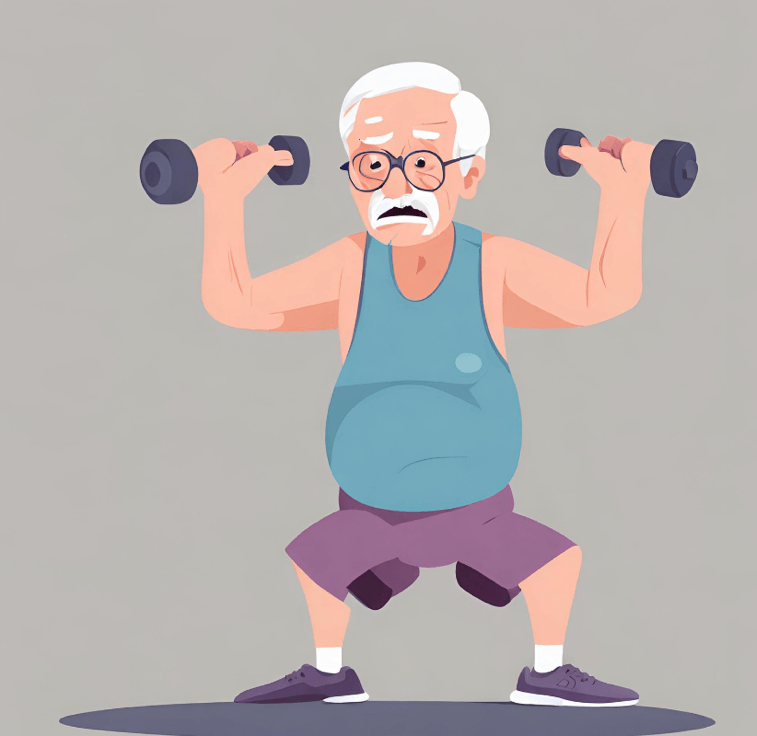Heart Health
Tailored Workout Guide for 50+ Fitness Enthusiasts
Age should never be a barrier to achieving optimal heart health and overall well-being. This article is dedicated to providing tailored workout routines specifically designed for individuals in the golden years. We’ll delve into exercises that not only nurture heart health but also contribute to a holistic sense of well-being. From low-impact cardiovascular activities that gently elevate the heart rate to strength-building exercises that fortify muscles and joints, our goal is to promote a vibrant, active lifestyle that enhances both physical and mental wellness. Together, let’s embark on this journey towards a strong, joyful heart and a life filled with vitality and vitality.
1. Low-Impact Cardiovascular Exercises
In your 50s and beyond, heart health should be your first priority, and low-impact cardiovascular activities are a great option. Exercises such as swimming, stationary cycling, and brisk walking provide great cardiovascular benefits without putting undue strain on your joints. These workouts support improved heart health generally, blood pressure regulation, and blood circulation. Aim for at least 30 minutes of low-impact cardiovascular activity most days of the week to get the full advantages. Maintaining this regular effort will benefit not just your heart health but also your general health as you enter this exciting phase of life.
2. Strength Training for Heart Health
Maintaining muscle mass becomes more and more important for general health and movement as we age. Exercises for strengthening the body that make use of bodyweight movements, light dumbbells, or resistance bands can be quite successful. It’s critical to concentrate on complex workouts that work many muscle groups at once. These might be push-ups, lunges, squats, and other such exercises. Strength training can help your heart health and improve your general physical health by adding 2-3 times a week to your regimen. This will keep you active and flexible as you enter this new phase of life.
3. Flexibility and Balance Workouts
As we become older, maintaining general fitness and wellbeing increasingly depends on focusing on flexibility and balance. Participating in practices such as yoga, Tai Chi, or targeted balancing exercises can significantly improve stability and lower the likelihood of accidents and falls. These exercises greatly enhance mental health in addition to developing physical strength and balance.
They are recognized for their ability to promote relaxation, lower stress levels, and, by reducing the detrimental effects of ongoing stress, indirectly improve heart health. By adding these routines into your life, you’re supporting not just your physical health but also your mental and emotional well-being, which will make your latter years more alive and meaningful.

4. Interval Training for Heart Health and Metabolism
A flexible method that can be tailored to suit people of all ages is interval training. It entails alternating between brief bursts of intense exercise and rest or lower-intensity activities. This dynamic alternation is a great option for anybody wishing to maintain their heart health while effectively managing their time because it not only increases cardiovascular fitness but also speeds up the metabolism.
Interval training helps your body use oxygen more effectively, which is important for heart health in addition to increasing your cardiovascular endurance. This method provides a well-rounded workout that strengthens your cardiovascular system and enhances your general health and energy. Whether you’re in your 30s or beyond, interval training can be customized to suit your fitness level, making it a highly effective and adaptable exercise strategy.
5. Mind-Body Practices for a Calm Heart
Techniques that can induce relaxation and lower stress levels include deep breathing techniques, mindfulness, and meditation. These methods, when included in a daily routine, have a significant and beneficial effect on heart health. People can achieve a deep level of relaxation via the practice of meditation, which involves concentrated concentration and heightened awareness.
This procedure therefore sets off the body’s relaxation response, which lowers blood pressure and heart rate. Similar to this, practicing deep breathing techniques like diaphragmatic or belly breathing aids in triggering the parasympathetic nerve system of the body, which encourages tranquility and relaxation.
Cortisol and other stress chemicals are thus decreased, which improves heart health. Furthermore, practicing mindfulness helps people to live in the present moment to the fullest, which promotes calmness and quiets the mind. This focused state lowers heart rate and blood pressure, which is ultimately good for heart health. You may actively support the health of your heart by adopting these routines into your everyday life. You’ll experience lowered blood pressure, less stress, and an overall feeling of vigor and tranquility.
6. Gentle Resistance Exercises
There are several advantages to doing low-impact workouts, including those with resistance bands or small weights, for those who want to strengthen their muscles and maintain healthy joints. These workouts are very adaptable and may be tailored to meet individual needs and fitness levels. People may efficiently strengthen their muscles, increase their endurance, and improve their overall heart health by adding modest resistance training into their daily exercise program. These exercises also assist in lowering the chance of injury, keeping a healthy weight, and enhancing posture. Light resistance workouts offer a safe and efficient technique to reach optimal physical health, whether it’s for rehabilitation or just to improve one’s level of fitness.
Age should never be a barrier to achieving a healthy, happy heart. With tailored workouts that focus on low-impact cardio, strength training, flexibility, balance, and mindfulness, individuals in their 50s and beyond can enjoy a vibrant, active lifestyle while supporting heart health. Remember, consistency and listening to your body are key. By making exercise a regular part of your routine, you’re investing in a strong, happy heart and a fulfilling, active life.


